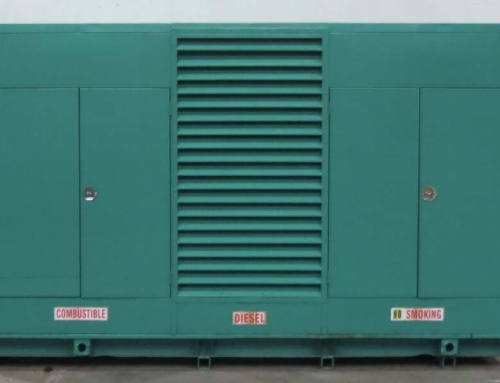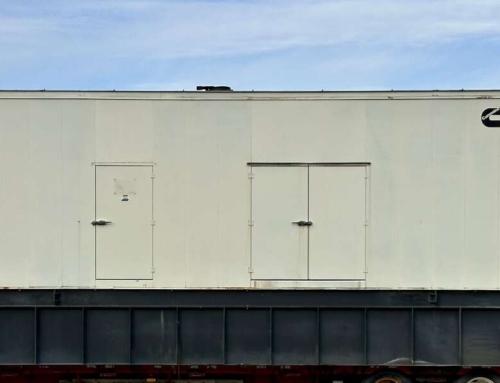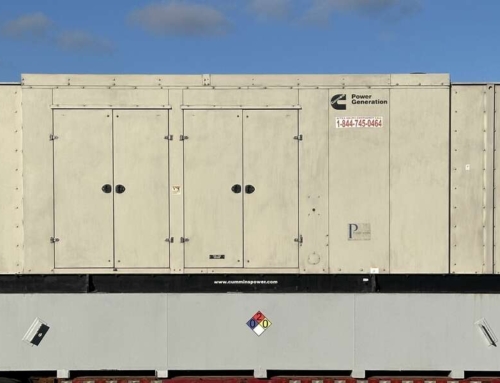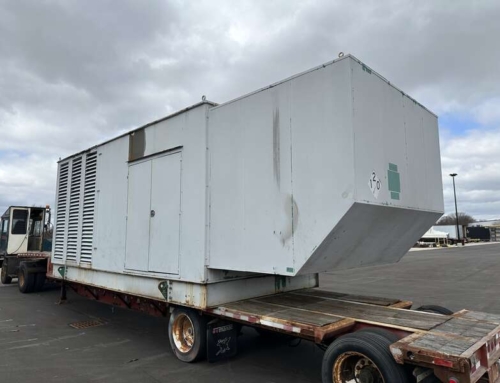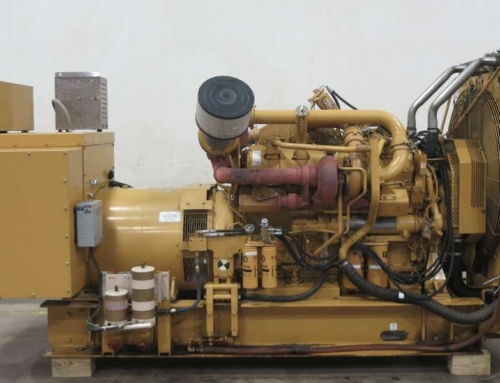The CARB Generators refer to any and every generator that adheres to the current air pollution standards set by CARB. The CARB generators offer their own sets of benefits and leverage, making them both essential and efficient addition to your houses and businesses.
These generators also promote clean and pollution-free use. When in California, it is a must that all your generators are CARB compliant. Now the question arises what is CARB and a CARB Compliant generator? And this is precisely what we will explore in this definitive guide.
What is CARB?
CARB, short for California Air Resources Board, is a California state agency responsible for controlling and mitigating air pollution. Established in 1967, the state agency was formed with an agenda to regulate air quality and keep air pollution in control. It was done so because of the increased emissions from an internal combustion engine. California, in fact, is the first US state to realize the necessity for formal legislation governing air quality management.
CARB created strict rules and regulations than those enforced by the Federal Clean Air Act that went into effect the same year. The roots of CARB, however, date way back to 1940. The state board came into being after the risk of rising air pollution. This rise is exactly what led to the formation of the Los Angeles County Air Pollution District. The committee was established to track industrial facilities and power plants, as well as to discover air pollutants.
What Are the Roles of the California Air Resources Board?
The main objective of CARB is to ensure healthy air quality and reduce air pollution levels through strict regulations and policies. CARB takes statewide action to ensure the safety of California residents against exposure to contaminants and toxins in the air. It accomplishes this by creating stringent emissions standards.
It also covers motor vehicle emissions standards, smog check processes, and financial incentives for clean fuel technologies. The agency also imposes requirements through several projects and regulations that it updates every year.
What is CARB Compliant Generators?
The California Air Resources Board oversees all pollution issues, including air and water problems. CARB sets current emission standards that your generator must comply with to achieve that objective. If it does, the generators will be recognized as CARB Compliant. If it does not, the generators will be recognized as CARB Noncompliant. The CARB compliant generators produce fewer toxins, harmful emissions, and particulates, resulting in cleaner and safer air quality.
How Does CARB Compliance Reduce Air Pollution?
CARB seeks to reduce greenhouse gas emissions and air pollution. It limits emissions that certain engine types are allowed to emit to accomplish it. With a critical objective of lowering SORE (Small Off-Road Engines) emissions, CARB focuses on several specific pollutants. Since SORE emissions comprise around 15% of total air pollution, they should be heavily regulated. CARB regulations limit the usage of:
- Carbon Monoxide
- Carbon Dioxide
- Nitric Oxides
- Sulfur Oxides
- Hydrocarbons
- Particulate Matter
How Does CARB Limit SORE Emissions?
Small Off-Road Engines contribute to air pollution in three ways, and CARB aims to reduce all three. SORE equipment has a rated power of 19 kilowatts or less. CARB regulates SORE machinery to ensure that even the most miniature engines promote better air quality. SORE restrictions, however, do not apply to diesel engines or engines used in fixed machinery like commercial generators. These engines must adhere to their own set of laws, though.
01. Exhaust Emissions
The inefficient combustion of fossil fuels primarily produces most of the above-mentioned pollutants. Contrarily, fuel injection, crankcase vent lines, and carburetors often guarantee cleaner fuel burning. It is an accepted, understood, and proven fact that fewer emissions are produced by more efficient machinery. This CARB Regulation is exactly what led to advancements in small-engine technology that made it possible for them to operate more cleanly.
02. Evaporative Emissions
Hydrocarbons and reactive gasses are discharged into the atmosphere when gas evaporation from fuel tanks or pipelines occurs. Therefore, the pressure-relief valve system and modifications to the carbon canister or other materials keep the gas safe inside the engine. The inclusion of new mechanisms to maintain fuel inside the engine and a modification in materials to avoid this evaporation were both required by CARB regulations.
03. Spillage
Fuel leaks or spills typically emit harmful gasses and hydrocarbons into the atmosphere during use or refilling. As a result, this pollution is controlled by current CARB regulations and designs (for fuel caps and gas cans). Updated gas cans and fuel caps specifications were significant advancements designed to reduce leakage.
Does CARB Permit Use of CARB-Noncompliant Generators in California?
The state agency prohibits producing, selling, and using engines and generators that do not comply with CARB regulations. Any vehicle cannot get around CARB regulations. A CARB-Noncompliant Vehicle Warning may be shown on noncompliant road vehicles, making the California Department of Motor Vehicles unable to register the vehicle.
CARB regulations primarily affect heavy equipment and automobiles with internal combustion engines. Tractors, lawnmowers, vehicles, trucks, chainsaws, and generators (residential and commercial) all fall under this category.
Among the fuels utilized in internal combustion engines are propane, diesel, and natural gas. These fuels must be managed for the pollutants, particulates, and harmful compounds they produce to safeguard public and environmental health. Any engine made or sold in California that consumes combustible fuel must be CARB-certified.
What is the Difference Between CARB and EPA?
CARB is a California state agency responsible for regulating generator and engine emissions only in California. On the other hand, the Environmental Protection Agency (EPA) is a federal agency in charge of managing nationwide emissions laws. The main difference between CARB and EPA is that CARB has far stricter standards.
A CARB compliant engine and generator are more effective and efficient. While all engines produced or sold in the United States adhere to EPA requirements, CARB criteria are only mandated by law in California. California residents must comply with CARB, whereas all other states demand EPA compliance. CARB compliant generators are not only environmentally friendly but also provide high reliability.
Difference between CARB and EPA TIERS I, II, III, and IV
Tier rules and CARB regulations diverge in how the EPA monitors generator emissions criteria. Although they have distinct requirements, both regulatory systems strive to lower fuel emissions with their own rules and regulations. Diesel generators are included in the scope of the EPA Tiers for equipment with nonroad diesel engines.
While EPA Tiers are primarily related to diesel engines, which include diesel generators, there are also natural gas generators produced that adhere to EPA certifications and are referred to as an EPA Certified natural gas generator set. The EPA Tiers show how engine modifications throughout time have improved their environmental friendliness. Generator emissions should adhere to the most demanding EPA Tier standards in force during production.
- Tier 1: The first federal emissions rules for nonroad diesel engines rated at or above 37 kilowatts were enacted by the EPA in 1994.
- Tier 2: The EPA enacted Tier 2 in 2001 as the first step in its objective to decrease nonroad diesel engine emissions by up to two-thirds by enforcing stricter criteria than those of Tier 1.
- Tier 3: The second stage of the reduction in emissions for nonroad diesel engines, Tier 3, was introduced in 2006, gradually phasing out Tier 2.
- Tier 4: Stricter criteria for engine testing and operation were established by the EPA’s Tier 4 emissions rules, which became effective for diesel engines of all kilowatt ratings in 2008.
Why Is CARB Compliance Important?
The CARB noncompliant generator produces higher harmful emissions that degrade the air quality and lowers the quality of life. CARB regulations not only maintain healthy air quality but also offer you numerous benefits. First, a CARB compliant generator or engine is more efficient and reliable. The CARB-compliant generators also benefit you in the following ways:
- High-quality Products: The best materials and components are used to manufacture CARB compliant generators. They, therefore, have the best fuel economy, are incredibly robust, and provide the cleanest energy.
- Less Air Pollution: CARB compliance ensures you don’t risk your health when utilizing an alternate power source during a power outage. With CARB compliant generators, you can ensure cleaner and better air.
- Avoid Risk of Penalty: A noncompliant generator might put the buyer or seller at risk of paying a fine based on state or local rules. If your generator complies with CARB regulations, it complies with more stringent standards than those set by Environmental Protection Agency regulations. With CARB compliant generators, you can avoid the risk of triggering a fine.
CARB-Compliant Generator Over Noncompliant
Propane, gasoline, sulfuric oxides, and carbon monoxide are combustible fuels that can harm humans and the environment. Utilizing such fuels safely with a CARB compliant generator is still feasible. Generators that adhere to CARB regulations improve the environment and the climate while lowering air pollution. Additionally, investing in a CARB-compliant generator will lessen ailments typically brought on by hazardous air pollution.
How to Get a CARB Compliance Certificate for a Generator?
To avoid the risk of getting a sanction, you have to get a CARB certification for your generator. The CARB compliancy certificate is vital for manufacturing, buying, or selling generators or engines. The California air districts require manufacturers to verify their products before selling them in California.
Companies that produce electricity to supplement the grid’s supply are subject to regulations set out in the Distributed Generation Certificate Regulation. The certification application, which outlines the specifications for authorized generator manufacturing and operation, must be completed by manufacturers.
Final Takeaways,
Some things are simply too important to be tainted. If it is the environment, then there cannot be anything more substantial. And we at Central States Diesel Regulators ensure that we not only keep pollution and the environment in check but also provide emergency power to keep your operations going in case of a power outage.
Our high-quality generators are a thoughtful choice that makes it possible to fulfill all needs efficiently. Central States Diesel Generators also guides you on all matters and aspects to ensure you have the suitable or standby generator for your requirements.
Mostly Asked Questions About Carb Generators
01. Can California Residents Use a CARB Noncompliant generator?
California state prohibits buying, selling, or manufacturing CARB Noncompliant generators. So, the answer is no.
02. Are CARB compliant generators better?
Yes. They are very. It provides numerous benefits, including health and the environment. CARB achieves this by limiting the emission of dangerous gasses like carbon monoxide, nitrogen oxides, sulfuric oxides, and more. You can also reduce emissions and air pollution, making them ecologically beneficial.
03. What Other States Comply With CARB?
Besides California, the states of New York, New Jersey, New Mexico, Washington, Pennsylvania, Rhode Island, Colorado, Connecticut, the District of Columbia, Oregon, Vermont, Maine, Maryland, Delaware, and Massachusetts comply with CARB.
04. What if my generator does not meet CARB requirements?
Since using a CARB noncompliant generator is not prohibited, having one will not be an issue. You cannot, however, sell it or get another noncompliant generator. So, by state legislation, if you are going to buy a new generator, it must be CARB compliant.
05. What Sets EPA Generators Apart from CARB Generators?
CARB stands for California Air Resources Board, whereas EPA stands for Environmental Protection Agency. The CARB operates only in California, whereas EPA has statewide regulations. Besides this, the only major difference between them in CARB is generally stricter than EPA.
06. How Can You Tell whether a Generator Complies with CARB Standards?
You can tell if a generator has been built to adhere to the strict emissions criteria by looking for the CARB compliance label on it.



